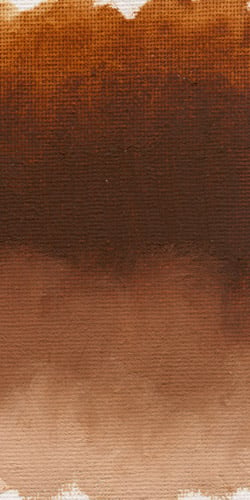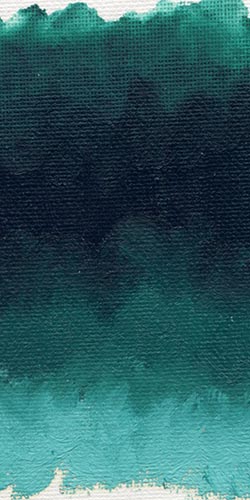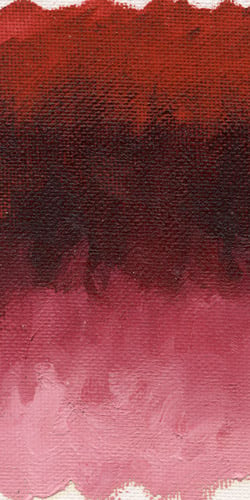Oil paint palettes introduction
Are you just starting out with painting and have no idea which colors you need? Or maybe you are wanting to make your current palette a little bit more basic. Either way, your palette is incredibly important as the colors you choose to put on your palette influences all of your paintings thereafter. Not having some colors and having others requires you to sometimes mix differently and can bring slightly different coloristic outcomes.
I personally use a rather large palette, but its size might be a little bit overwhelming for those who are just making their first foray into the world of color. Therefore, I am making two separate color recommendations. The first is a limited palette – the second is more of a full palette! You could even start out using a limited palette and then move to using a fuller palette. Up to you!
Limited Palette
Limited palettes are great in that you obviously have just a few colors to work with. In this way you do not need to get overwhelmed by all the color options available. You can focus yourself on thinking tonally without the distraction and complication that color can bring.
In painting, value structure is the most important thing. It is far more important to achieve a strong tonal structure than to get brilliant colors. Obviously having both is what you want to shoot for.
However, if you have terrible colors, but your value structure is strong then your painting will work If however your colors are great but your value structure does not work, then your painting will not hold. So, first learning from a limited palette is not that bad of an idea.
Different Limited Palette Options
There are several different options when it comes to limited palettes. Below you will find my recommendations. The first is more earth tone based. You will not be able to get any bright yellow or red colors with this palette. You will be focusing on value over color anyway though when using the limited palette.
The color group listed uses cadmium red and cadmium yellow instead of the earth tones yellow ochre and burnt sienna. These colors are more expensive than their earth tone counterparts, but will also give you a fuller color range to work with.
Option 1 for limited palette (earth tone based)
Option 2 for limited palette
Full Color Palette
A full color palette allows you to have a full range of colors at your disposal as you paint. You do not need to spend as much time mixing your colors with a full color palette as with a limited palette. For example, you will never need to mix yourself an orange to mute your blue or vise versa. When painting on a tight schedule or out in the landscape and trying to capture a certain time of day, you will be thankful to have a full color palette.
On the other hand, having so many colors can be daunting and overwhelming if you are a complete beginner. You cannot just concern yourself with value – you need to think of color and tone together with a full color palette.
However, it can be a great learning experience to completely immerse yourself into color all at once. When doing so you learn how to mix with a full range of colors from the beginning. You will not need to go through another learning stage as you would if you switched to a full palette after using a limited palette.
Full Color Palette Colors
White (cremnitz white or titanium)
Cadmium green light (optional)
Resources
If you have further questions or thoughts about oil paints comment or ask below.





















5 thoughts on “Necessary Oil Paint Colors for Beginners”
I have a rather basic question. I understand the use of primary colors to create other colors. I see brands with over 100 colors, which in theory could all be made with primaries – what is the benefit of these colors overs colors you blend yourself? I can mix yellow and red to get orange – is orange paint made from a mix of red and yellow pigments, or a single orange pigment, or does it vary by color? What would be the difference in graying down a blue with a mixed orange and a ‘pure’ orange? Does an increase in number of raw pigments being mixed cause muddiness?
Good questions. There really are TONS of colors available on the market today! I personally have about 13 colors on my palette – which is much more than what is absolutely necessary. I could mix some of them up myself – however having certain tubes of color saves me a lot of time (I do a lot of premier coup paintings)! For example, I use orange a lot. I could mix my own orange, but having a tube of it available saves me a lot of time from needing to mix it up every time I need it. In addition, it is very difficult to mix up a very bright orange like you get with a cadmium orange. At a basic level orange is created by mixing yellow and red together. However a cadmium orange goes through more processes – it is produced by co-precipitating and calcining, at high temperature, a mixture of cadmium sulfide and selenide sulfide in varied ratios. This gives it its very bright and lightfast quality.
I find that graying down a blue with a mixed orange to be a little more effective – it mutes the color without looking a bit muddy. However, depending on the shade of blue a mixed orange could work just as well. I do not think an increase in the number of raw pigments causes muddiness. Rather, I think it has a lot to do with how one mixes the colors. Also, if one uses earth tone colors a lot – it is very easy for ones mixtures to turn muddy – fast.
leomorac@hotmail.com
Pingback: 10 Favorite Art Materials Under $25 - Art Studio Life
Pingback: Color Mixing with Oil Paints: all you need to know - Art Studio Life